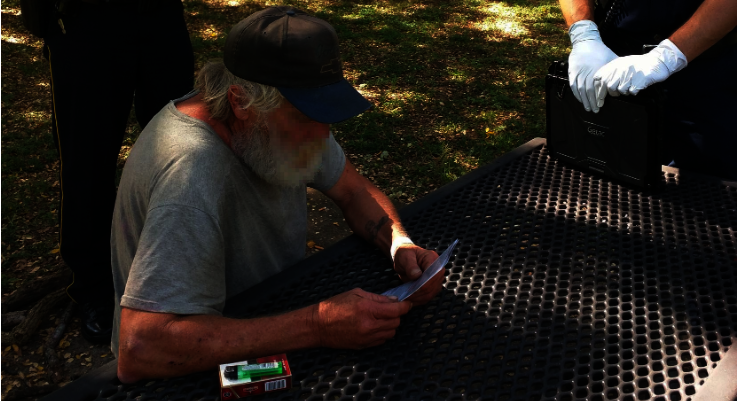Invest in Mental Health Squads
This article originally appeared as part of the Violence Reduction Project at Quality Policing.

In 2014, I began formally tracking unarmed people who died after an encounter with the police. In each year since then, one statistic leaps out to me as the lowest of the low-hanging fruit: more than half of those who die after a police encounter are suffering from mental illness, addiction, physical disability, or a combination of those things.
Based on the data I have been analyzing for five years, I believe an asymmetrically effective way to reduce police-involved violence is for every one of America’s 12,500 local police departments to create from their existing workforce a mental health unit, comprising two cops and a mental health professional. Have them patrol every day.
Cops weren’t particularly well trained for it, nor was it a responsibility they sought, but the reduction of federal spending for local mental health services by every administration since Lyndon B. Johnson’s has left police as America’s first line of societal response to mental illness. These duties have been thrust as an unfunded mandate upon police departments, in lieu of anyone else stepping up.
The results have been devastating: There are ten times more people with serious mental illnesses in America’s prisons and jails than in state mental hospitals, according to a 2014 report from the Treatment Advocacy Center. Some of our nation’s largest psychiatric in-patient clinics are in county jails in Chicago, Los Angeles, New York, and Fort Worth. About one in four people who have mental illness have a drug or alcohol abuse disorder. What’s worse: eight in ten people with mental illness who are jailed get no access to necessary treatment.
One in seven men, and one in three women booked into American jails have a serious mental health condition. In Los Angeles, 95% of jail inmates with a mental health diagnosis had been previously arrested and jailed; 88% had been confined to a psychiatric hospital, and 76% had a history of substance abuse. A 2002 study found that 68% of jail inmates reported symptoms in the year before their admission to jail that met substance dependence or abuse criteria.
In Tarrant County, TX, Sheriff Bill Waybourn’s jail routinely sees people with diagnosed mental health challenges comprising 45% to 50% of its daily inmate population of 4,000. The jail’s psychiatric wing has a mental health staff embedded within a cadre of trained mental health corrections officers, but that’s only a partial solution to a problem that should not exist in the first place.
Elsewhere in Tarrant County is what I believe is a model for national response to these challenges: The Behavior Intervention Unit of the Hurst, Euless, and Bedford Police Departments. The BIU is a team of certified Texas Mental Health Peace Officers paired with clinicians, who patrol the three cities. They don’t diagnose, but they are trained to gather the right facts to connect a person who has a mental illness and might be in distress with health professionals.
The BIU patrols each weekday, focusing on wellness checks of known mental health patients including those who might be treatment non-compliant, in addition to crisis management. Since its establishment in 2014, the area has seen a reduction in acute mental health crisis hospitalizations.
More important, it has also seen a reduction in the percentage of its jail population diagnosed as mentally ill. Part of this is that Hurst, Bedford, and Euless officers who encounter someone with apparent mental illness immediately call in the BIU, before arrests are made. This leads to significant de-escalation in non-crisis situations. Officers who understand the history and context of those in their communities with mental illness means they don’t need to try and build rapport in the midst of a tense situation: anecdotally, when BIU officers show up, situations are less likely to turn violent in the first place.
Such creative programs stress regular visits and include outreach to friends and family. It’s a really smart way to work; it saves lives and money and arguably makes the community more strongly supportive of all its residents. Many state police academies have also been adding more training in mental health and disability.
We need more of these programs, and with an even broader focus.
A different approach gaining popularity is the Memphis Model Crisis Intervention Team (CIT) for first responders. Under the CIT model, police officers are trained how to recognize the symptoms of a mental illness crisis, how to communicate with people experiencing a mental health crisis, and how to intervene without escalating. The model has been widely praised and should continue to be adopted around the country.
But it is clear that the problem is bigger than just crisis management — the work needs to start before a mentally ill person goes into crisis in the first place.
Even with new training, we must remember that the police should be the last line of defense from mentally ill people who potentially pose a threat to the community. Instead, police are too often the first.
Mental illness is a society-wide issue. It can’t just be a police issue. The buck can be passed down, but cops can’t pass the buck back up. If we are going to mandate cops to respond to mental-health crises (and we do), the least we can do is give them the proper training and support – not just criticism when things go wrong. Helping the mentally ill cannot be a mandate that is both unfunded and unsupported.
